This post may contain affiliate links. Please read our disclosure policy.
Pickled vegetables are the perfect tart crunchy snack or accompaniment to a meat and cheese board. This easy pickled vegetable recipe is versatile for all your favorite vegetables.
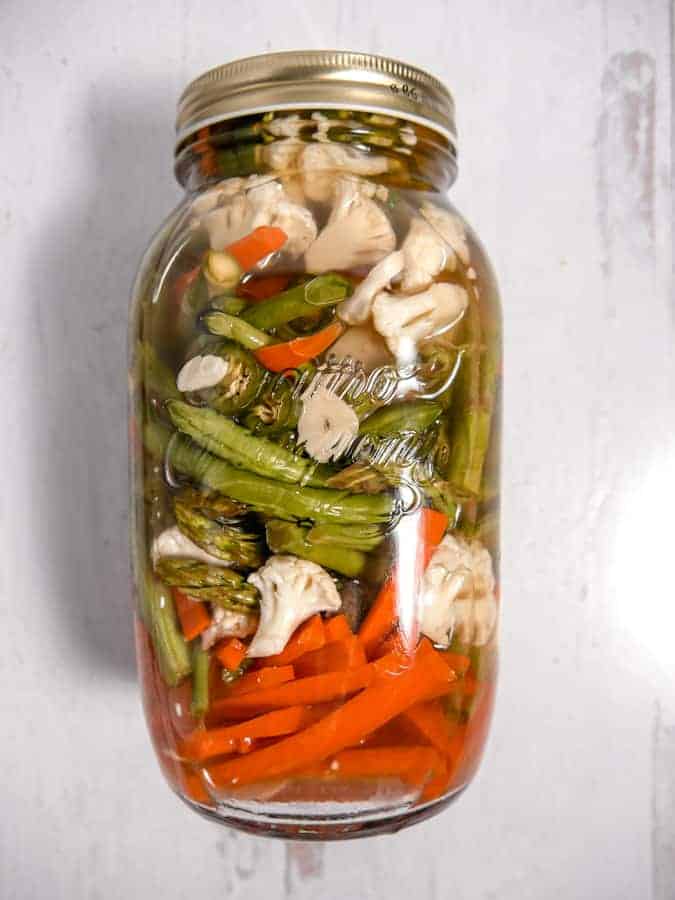
Vegetables
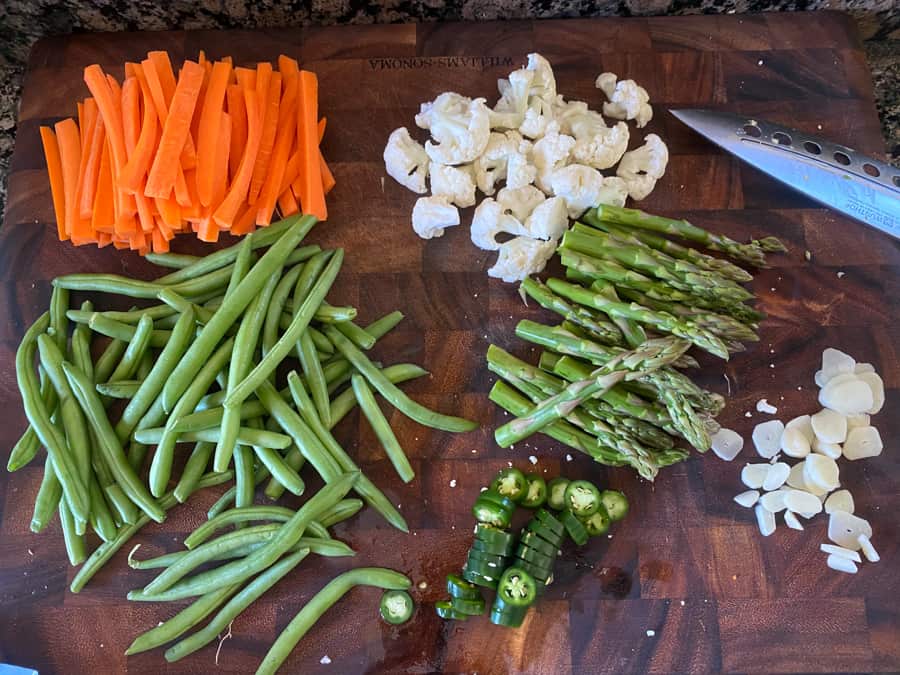
Email this Recipe!
Email this recipe to yourself to save for later.
By submitting this form, you agree to receive emails from Girl with the Iron Cast.
For this recipe I used green beans, carrots, cauliflower, asparagus, garlic, and serrano peppers for some heat. You can use this pickling liquid on a wide variety of your favorite vegetables. For thicker vegetables such as carrots, I like to slice them thinner so the pickling liquid can penetrate them more easily. Keep this in mind when choosing your vegetables to use.
Pickling Container
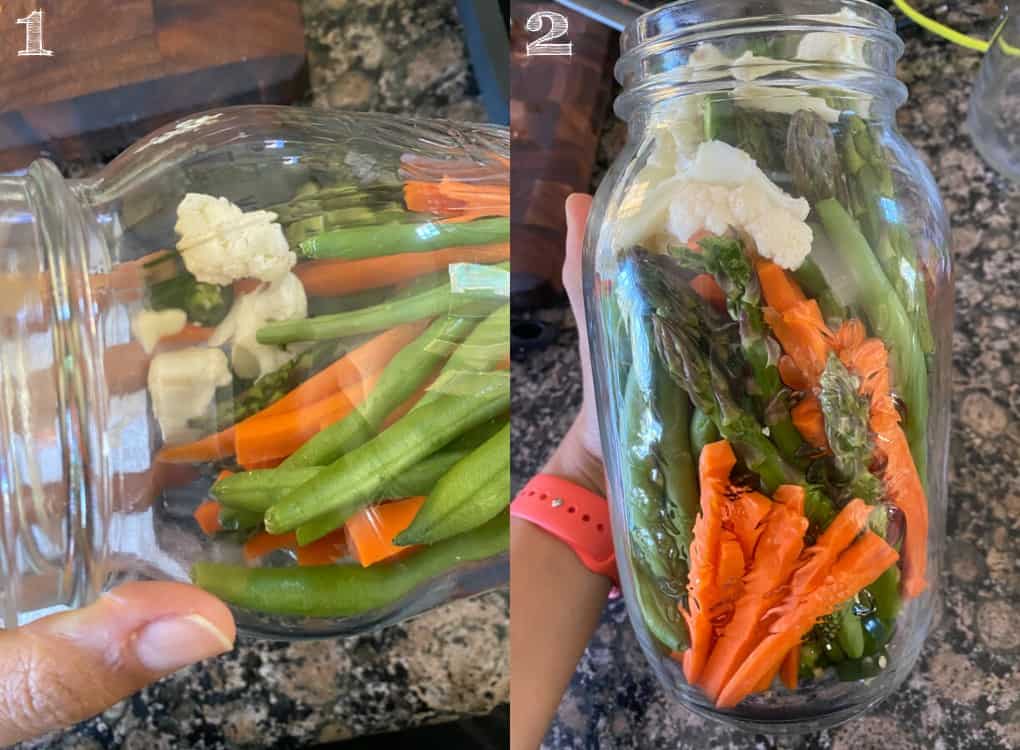
After you have finished prepping your vegetables, I arrange them into a mason jar. I find it easiest if I tilt it to the side then slide the vegetables in. Make sure whatever type of jar you use, it is heat safe since the pickling liquid will be poured in while warm. For the recipe, I used a 36oz (4 1/2 cup) mason jar. Due to the vegetables in the jar, there will be less liquid than the size of the jar.
Pickling Liquid

The pickling liquid consists of: apple cider vinegar, white wine vinegar, filtered water, kosher salt, maple syrup, and mustard seeds. I use maple syrup as the sweetener in the liquid because it is more subtle sweetness once absorbed. In a saucepan over medium heat, add in the pickling liquid components. Stirring frequently, heat the liquid until the salt and syrup has been absorbed. Careful not to overheat the liquid, it should not boil, only release a bit of steam off the top.
Pickling the vegetables
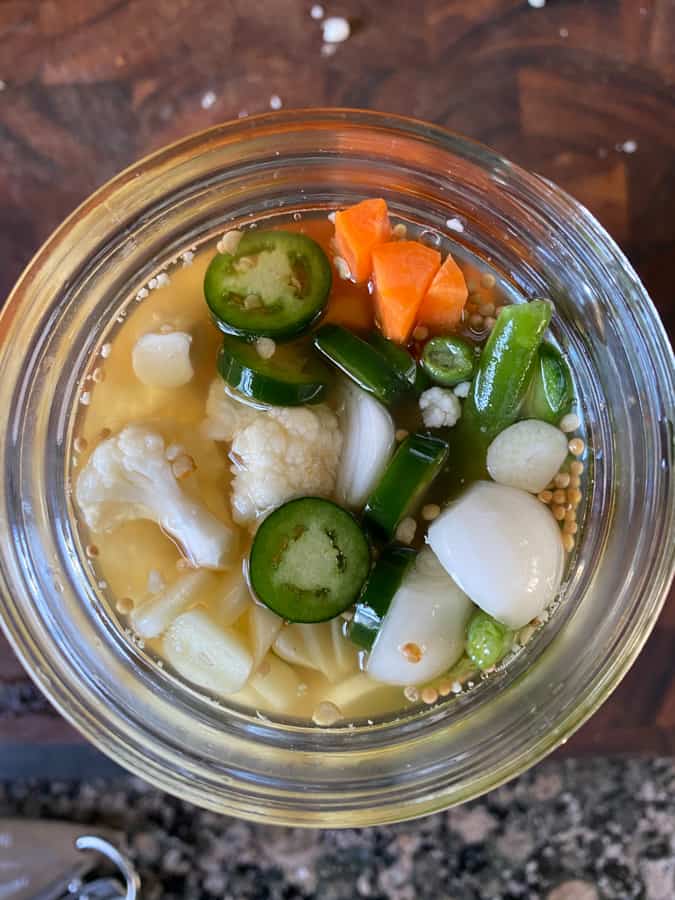
After the pickling liquid is ready, carefully pour over the vegetables in the jar. Allow the jar to come to room temperature before placing in the refrigerator. Let the vegetables pickle for minimum 3 days before enjoying, best practice is to wait 5 days.
Storing the pickled vegetables
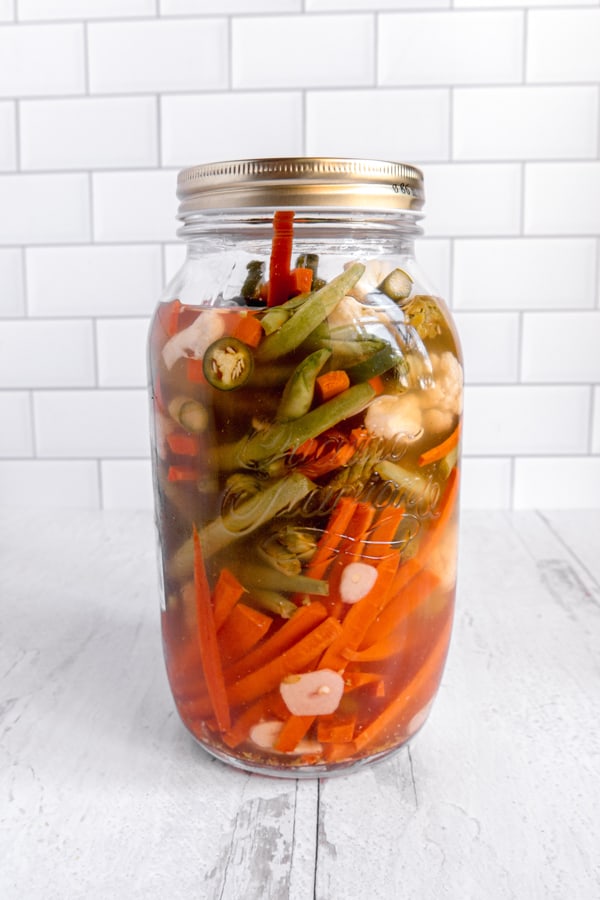
They should last up to 5 to 6 months, in a sealed container, in the refrigerator. The pickling liquid may change the color of certain vegetables added, don’t be alarmed. If there are bubbles present, that is a sign of bacteria and should be discarded.
How to use?
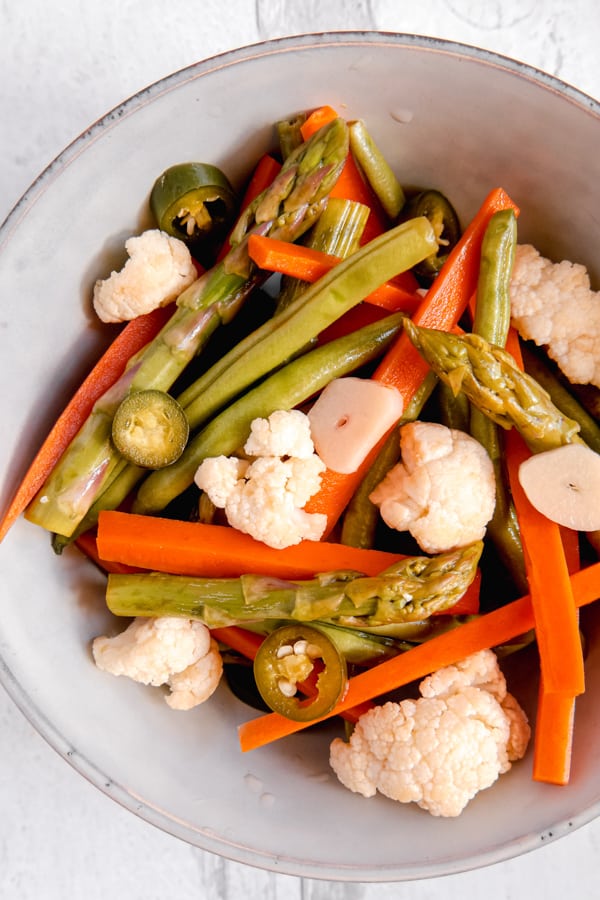
You can enjoy the pickled vegetables on their own and a crunchy tart snack, as an accompaniment to a meat/cheese board, and great for using up extra vegetables you have.
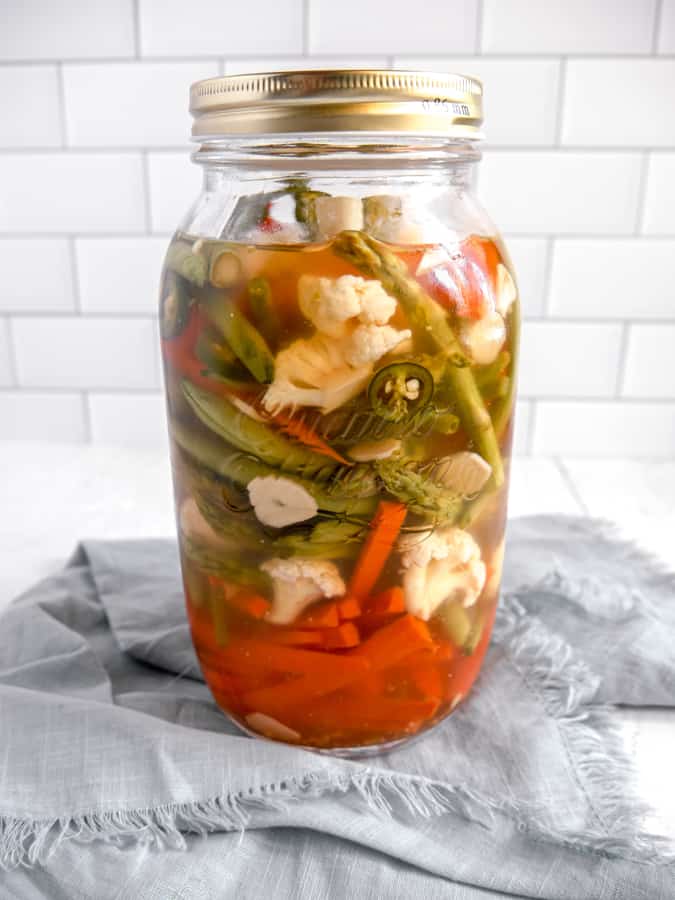
Love pickling? Check out my pickled red onions! Quick, tangy, and so good on top of so many dishes.
Did you make this? If you snap a photo, please be sure tag me on Instagram at @girlwiththeironcast or hashtag #girlwiththeironcast so I can see your creations!
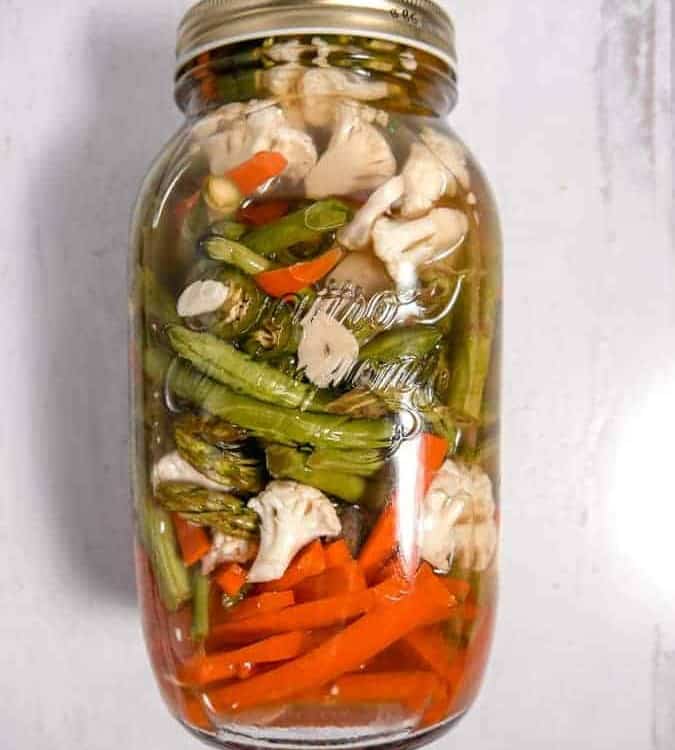
Pickled Vegetables
Ingredients
Vegetables
- 3 large carrots (peeled & julienned)
- 6 ounces green beans (ends trimmed)
- 1 cup cauliflower florets
- 4 cloves garlic (thinly sliced)
- 6 ounces asparagus tips (trimmed)
- 1 Serrano pepper (sliced thin )
Pickling Liquid
- 1 cup apple cider vinegar
- 2/3 cup white wine vinegar
- 1/2 cup filtered water
- 1/3 cup maple syrup
- 2 tablespoons kosher salt
- 1 teaspoon mustard seeds
Email this Recipe!
Email this recipe to yourself to save for later.
By submitting this form, you agree to receive emails from Girl with the Iron Cast.
Before You Begin! If you make this, please leave a review and rating letting us know how you liked this recipe! This helps our business thrive & continue providing free recipes.
Instructions
- In a 36oz heat safe jar, arrange the prepped vegetables inside. To assist getting them in the jar, tilt the jar on it’s side when adding the vegetables.
- In a saucepan, over medium heat, add in all the pickling liquid ingredients. Heat until kosher salt and syrup is dissolved. Do not overheat, liquid should not boil.
- Carefully pour the pickling liquid into the jar over the vegetables. Place lid on the jar and allow to come to room temperature before placing in the refrigerator.
- Allow to pickle for minimum 3 days before enjoying, preferred is 5 days. Store in refrigerator for 5-6 months.
Notes
- You can substitute the serrano peppers with pepper of choice, peppercorns or crushed red pepper flakes
- Substitute your favorite vegetables in the recipe. For thicker vegetables, such as carrots, slice them thinner so the pickling liquid can penetrate more easily
- Pickling liquid may change the color of some of the vegetables used, this is normal
- If there are bubbles present, that is a sign of bacteria and it should be discarded
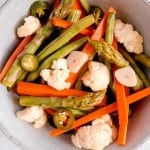
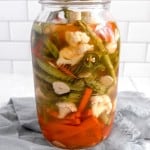


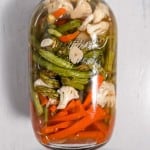
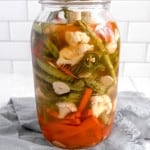
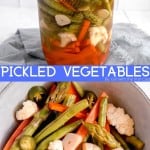
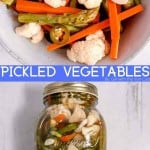
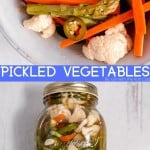
Can you water bath these pickled veggies to make them shelf stable?
Hi Reba, yes you can! Just ensure you are following proper and safe canning techniques.